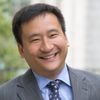There are no Asians in Asia.
The claim seems preposterous. It could not be more true.
As I concluded a business trip spanning East Asia, I realized again how "Asian" is a construct we have imposed on a sprawling region with multiple languages, cultures, and peoples. We interacted with people who were proud to be Chinese, Taiwanese, Japanese, and Korean -- not an Asian among them.
Each of the places we stopped has its own organic sense of identity. Likely none of the inhabitants of any of them would call themselves "Asian" unless prompted to do so. (For that matter, I am skeptical that there are very many Europeans in Europe, Africans in Africa, or Middle Easterners in the Middle East.)
There are commonalities throughout at least parts of East Asia. The staple of rice and the ritual of tea, for example, make a meal; without rice and tea, it isn't a proper repast. The cachet of Western luxury brands has become established, with the rows of glittering boutiques that could be mistaken for their counterparts in any other shopping mall.
In the past, however, pan-Asianism has been either an idealistic dream or an imperial project. "Asia" has been demarcated against Europe or to the disadvantage of most of its constituent pieces.
Okakura Kakuzo, a Japanese writer, celebrated unity before the Russo-Japanese War. After the conflict ended in 1905 with the victory of an Asian power over an European rival for the first time in history, he proclaimed, "The glory of the West is the humiliation of Asia."
Then during World War II, the Japanese government championed "the Greater East Asia Co-Prosperity Sphere." The term barely disguised the ambition of the Land of the Rising Sun to be the controlling authority for the territories it was annexing by force.
More recently, Asian values have been promoted as embodying racial characteristics. Lee Kuan Yew, the inaugural and long-serving prime minister of Singapore, described Asians as oriented toward collectivism, unlike Westerners who preferred individualism. Despite his enthusiasm for Asian values, his version of the concept failed to catch on with the general public. They may have been suspicious it was being deployed as a justification for authoritarianism.
So it would surprise Asians to be named as such.
In Taiwan, the population includes indigenous peoples; the natives who were settled before the exodus from mainland China when the Communist regime took over; the refugees associated with the Kuomintang who decamped then to impose martial law while awaiting their return; and a smattering of newer arrivals who shuttle back and forth to do business in Taipei as well as Shanghai. The Chinese and Taiwanese would readily distinguish by class, dialect, province, village, and clan.
In Korea, there are further cleavages that are not ethnic. Literal congregations are determined by religion: Buddhism; Catholicism; and Protestantism in various forms. The dominance of Seoul separates the mega-city from everywhere else. The division of the peninsula between North and South leaves the body politic always aware of an absence.
In Japan, my wife and I met our mirror image. She is of Japanese ancestry, I, Chinese via Taiwan. We had breakfast with an expatriate couple who are the reverse: he is Japanese American; she is Hong Kong Chinese. They have made their careers outside the States, adapting to a series of cultures across Asia.
That last encounter made me appreciate Asian American pan-ethnic identity. People who call themselves by that name boast ancestors who would have been at war with one another, and cousins who have no love lost for one another. I would bet that there is a higher proportion of mixed marriages among Asian Americans than Asians. From an Asian perspective, a Chinese and a Japanese together are as heterogenous as could be.
In the new world, Asian Americans have formed a meaningful movement that brings together these diverse groups. Our affinity is based in part on an implicit pact of mutual defense: the claim that "you all look alike" in America is prelude to slurs and worse.
Asian Americans have progressed beyond that though. At its best, the designation embodies principles essential to American democracy: bridge building, forming coalitions, to advocate and gain political representation. It is the much-lauded melting pot, but not the same as envisioned by theorists who could see only white "ethnics" being turned into responsible citizens such as through Henry Ford's Sociological Department of a century ago with its pageant celebrating the miracle of assimilation.
Critics of multiculturalism like to attack "Asian American" and similar hyphenated statuses as "balkanization" dedicated to the self-interested cataloging of complaints about civil rights. They have it backwards. As W.E.B. DuBois, the "race man" who was the original public intellectual, argued, the majority did not hesitate to impose dual identity with negative connotations, rendering both a person and a people "the Negro problem." Thus, he suggested, to embrace double consciousness was to assert one's self against that subordinate station in life.
It can be conceded that "Asian American" is artificial, because human communities by definition must be. There should be no shame in invention. The symbols of belonging often are devised, only later to acquire their role within tradition -- Scottish tartans, for example, could not be more iconic but do not in fact have ancient lineage.
There are no Asians in Asia. But there are Asian Americans in America.
